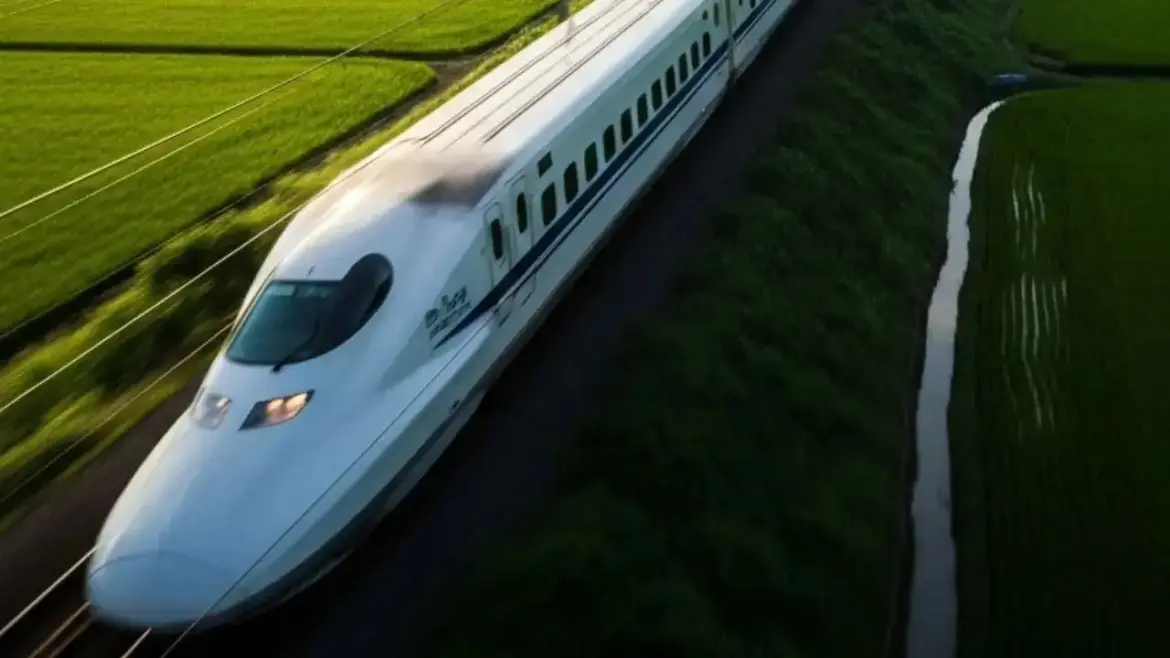Japanese Bullet Train On Track for Mumbai–Ahmedabad Corridor
You may have heard the buzz — a viral message has been floating around claiming that the much-anticipated Japanese bullet train won’t actually operate on the Mumbai–Ahmedabad route. That message? It’s false. The Railway Ministry has officially debunked the claim, reaffirming that India’s first bullet train project is moving ahead without delays.
“The message circulating on social media about cancellation of the bullet train project is misleading. The Mumbai–Ahmedabad High-Speed Rail Corridor is progressing as planned,” tweeted the Press Information Bureau (PIB).
The 508-kilometre corridor, being built using Japanese Shinkansen technology, is still very much a key piece of infrastructure in India’s future transit plans. Let’s break down what’s really happening behind the scenes, and what it means for commuters and the wider region.
What Makes the Shinkansen Bullet Train Special?
Developed in partnership with Japan, this project features their world-famous Shinkansen technology. Known for speed, safety, and reliability, these trains are designed to glide across long distances at up to 320 km/h — a massive leap from current Indian train services.
The Mumbai–Ahmedabad Bullet Train will use next-generation E10 series trains. These are customized to suit Indian terrain and environmental conditions, making them better suited for local service than regular imported tech.
Timeline of Construction and Launch
If you’re wondering when you can hop on this high-speed train — the current target is 2026. Multiple development phases are already in motion. Here’s a quick timeline of major milestones and what we’ve seen so far:
- 2020: Groundbreaking of various project stretches across Gujarat and Maharashtra
- 2021–2023: Land acquisition, viaduct construction, station framework installations
- 2024: Track and tunnel testing
- 2025: Train trials expected to begin on Indian tracks
- 2026: Official launch of full passenger service (tentative)
Although challenges slowed early progress, things have picked up speed. The Indian team, with support from Japanese engineers, is working hard to stay on this timeline. Weather delays and legal hiccups around land acquisition may tweak deadlines slightly, but there’s no indication of anything being cancelled.
Where Will the Bullet Train Stop?
The bullet train is planned to stop at 12 stations. Each of these has been chosen for a strategic mix of economic, cultural, or transit significance:
- Mumbai (Bandra Kurla Complex) – Launch point of the route.
- Thane – Near Dombivli East, serving Mumbai suburbs.
- Virar – A growing hub in Palghar district.
- Boisar – Industrial expansion zone.
- Vapi – Gateway to Gujarat.
- Bilimora – Helps unlock tourism in Navsari district.
- Surat – Textile power and business centre.
- Bharuch – Sits on the Narmada River, industrial corridor.
- Vadodara – Education and cultural city.
- Anand/Nadiad – Dairy and agriculture link in Kheda district.
- Ahmedabad – Major urban hub, near Kalupur.
- Sabarmati – Integrated with Ahmedabad Metro lines.
Each of these locations is expected to adapt surrounding infrastructure to accommodate high-speed rail systems, including better last-mile connectivity, real estate development, and public transport links.
Official Statements: Door to Fact, Not Fiction
In a time when misinformation spreads quickly and easily, official voices have held firm. The Indian Railways and the Press Information Bureau have publicly rejected any rumors about the derailment (pun not intended) of the bullet train plans.
“We continue to receive full financial and technical support from Japan, and both countries are wholly committed to this high-speed passenger rail link,” said a senior Railway Ministry official.
The Japanese side, too, seems all in. The use of their E10 series trains is a symbolic extension of the India-Japan partnership — a relationship rooted in trade, tech, and trust. If you’re feeling skeptical about this, you’re not alone. New infrastructure projects often get tangled in bureaucracy. But this one, unusually, seems to be staying the course. For now.
Community Buzz and Questions
Some Mumbai and Gujarat residents who live near proposed station areas have mixed views. There’s hope — economic growth, faster travel, local jobs. But there’s also worry. Will ticket prices be affordable? Will smaller towns be left behind?
Among the comments we’ve seen online, a few stood out:
- “If they keep fares low enough, I’ll be using it over flights every time.”
- “Hope it doesn’t become another expensive showpiece instead of helping people on the ground.”
- “Will my house near the Boisar stretch be affected?”
Questions like these show real engagement, and also highlight the need for continued community outreach from both governments. Transparency and affordability may end up being the key factors for public support.
What’s Next?
The Japanese bullet train on Indian soil – it’s not just an idea anymore. It’s steel, concrete, contracts, and progress on the ground. Will it stay on schedule? Probably, though we’ll have to see if Mother Nature or red tape interfere in the final stretch.
If all goes as planned, within two years riders could be zipping between Mumbai and Ahmedabad in roughly two hours. That’s a game-changer for sure — wait, can we say that? Actually, it’s just a much faster way to travel. Whether the public adopts it broadly is yet another question.
For now, the Mumbai–Ahmedabad High-Speed Rail project is full steam—or, let’s say, full electricity–ahead.

